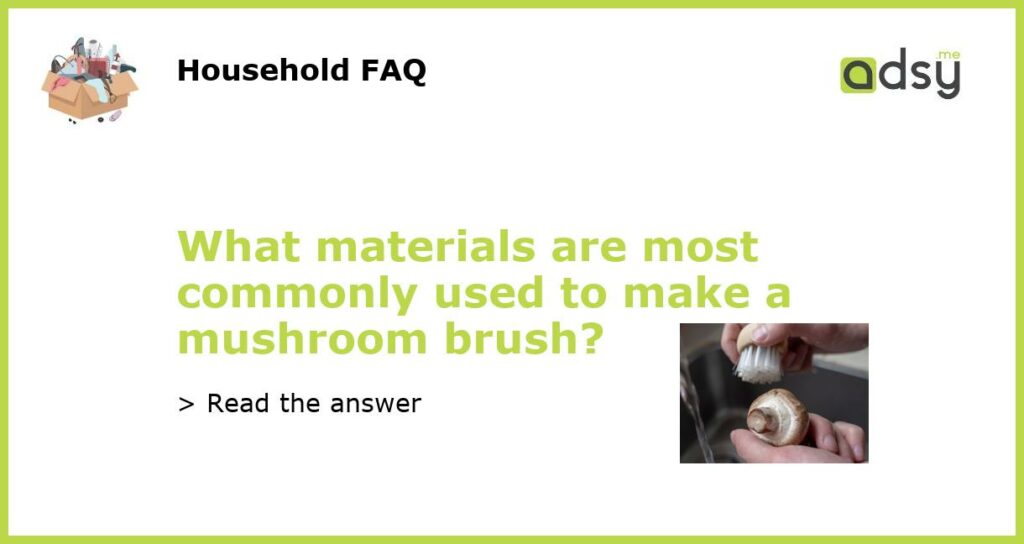The Best Materials for Making a Mushroom Brush
Mushroom brushes are an essential tool for mushroom foragers. They allow for easy cleaning of fresh mushrooms, removing dirt and debris while preserving their delicate texture. While the brushes come in a variety of shapes and sizes, they are typically made using the following materials:
Natural Bristles or Horsehair
Natural bristles or horsehair are the most common materials used for mushroom brushes. They are gentle on delicate mushroom caps, while effectively removing dirt and debris. Natural bristles are also highly durable, making them a long-lasting choice for mushroom hunters.
Synthetic Bristles or Nylon
Synthetic bristles or nylon can also be used to make mushroom brushes. These materials are highly durable and easy to clean, making them a convenient option for regular mushroom hunters. However, they may not be as gentle on delicate mushroom caps as natural bristles or horsehair.
Cork
Cork is often used for the handle of mushroom brushes. Its natural texture makes it easy to grip, even with wet or dirty hands. Additionally, cork is eco-friendly and sustainable, making it a popular material choice for environmentally-conscious mushroom hunters.
Wood
Wood is another popular material for mushroom brush handles. It is durable and easy to work with, allowing for a variety of handle shapes and sizes. Wood also has a classic, natural aesthetic that blends in well with outdoor environments.
Sustainable Materials
Sustainable materials, such as bamboo or recycled plastic, are becoming increasingly popular for mushroom brush handles. These materials are eco-friendly, often biodegradable or recyclable, and contribute to reducing waste. They also allow for unique designs and colors to be incorporated into the mushroom brush.






